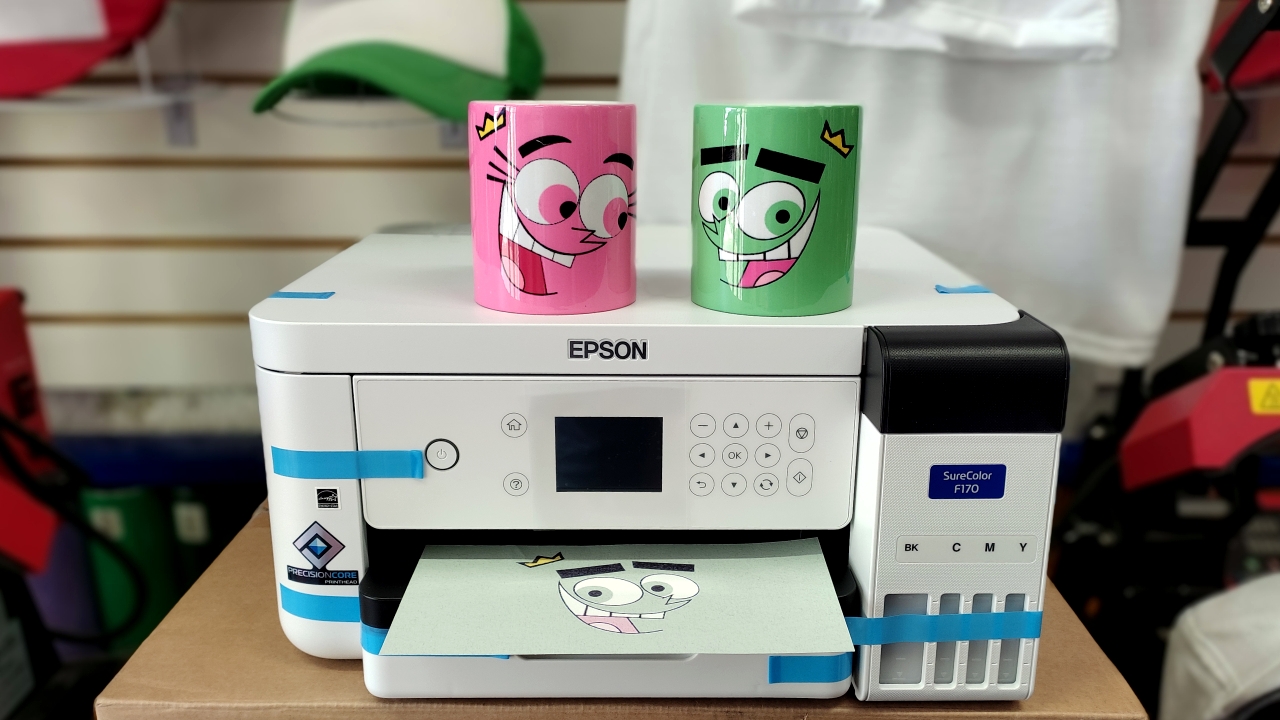TP-Link Deco X20: The Mesh System You Need!

TP-Link Deco X20 is a new wireless mesh system that promises to revolutionize how you connect to the internet. With its advanced features, this mesh system is designed to offer fast, reliable, and seamless Wi-Fi coverage throughout your home or office.
So whether you are streaming videos, playing online games, or browsing the web, TP-Link Deco X20 provides the speed and stability you need for a great online experience. This article will explore the key features of TP-Link Deco X20 and explain why it’s the mesh system you need for your home or office.
Personal Experience

While searching for a solution to the weak Wi-Fi signal in my three-story home with multiple smart devices, I stumbled upon the TP-Link Deco X20. The setup was easy and straightforward, thanks to the guidance of the Deco app.
After installation, I was thrilled to see that the coverage area was extensive, eliminating the dead spots in my house. Furthermore, the system could accommodate up to 150 devices without any speed drops, and the app made network monitoring and control effortless.
However, one downside of the system was that it operates on a cloud-based platform. This means that network settings are managed through the TP-Link cloud, which may raise security concerns for some users.
Additionally, while the app offers some customization options, it lacks certain features available in other mesh systems.
Next-Gen Wi-Fi Technology

Next-generation Wi-Fi technology refers to the latest advancements in wireless network connectivity that have revolutionized how we connect to the internet.
This technology promises faster speeds, more reliable connections, and increased coverage, essential for the growing number of smart devices and the increasing demand for high-bandwidth activities such as streaming, gaming, and video conferencing.
One of the most significant breakthroughs in next-gen Wi-Fi technology is Wi-Fi 6, also known as 802.11ax. Wi-Fi 6 provides faster speeds, increased capacity, and better coverage than previous generations.
In addition, it uses advanced technologies such as MU-MIMO, OFDMA, and BSS Color, which optimize network performance, reduces congestion, and improve battery life on connected devices. Another crucial advancement in next-gen Wi-Fi technology is the use of mesh networks.
Mesh networks use multiple access points to extend Wi-Fi coverage throughout a home or office. Unlike traditional Wi-Fi systems that rely on a single router, mesh networks can provide seamless coverage in every building corner.
This technology is particularly useful for larger homes or spaces with multiple floors where a single router might need to provide more coverage. In conclusion, next-generation Wi-Fi technology has significantly improved how we connect to the internet, providing faster speeds, increased capacity, and better coverage.
The Wi-Fi 6 standard and mesh networks are two of the most crucial advancements transforming how we connect to the internet, and we can expect even more innovations in the future.
Whole Home Wi-Fi Coverage

Whole home Wi-Fi coverage refers to a wireless network that provides seamless and uninterrupted internet connectivity to every corner of your home. This is achieved using multiple access points, also known as mesh nodes, that work together to create a single network.
Mesh networks are designed to eliminate dead spots and ensure a stable connection regardless of where you are in your home. Whole home Wi-Fi coverage is essential for homes with multiple floors, large areas, or thick walls that can interfere with the Wi-Fi signal.
Unfortunately, traditional Wi-Fi routers have limitations regarding coverage, which can result in frustrating slow speeds or weak signals. A mesh network, on the other hand, can easily expand coverage by adding more nodes. Setting up a whole home Wi-Fi system is easy and straightforward.
You can use a kit that includes multiple nodes or purchase additional nodes to extend your existing Wi-Fi network. Once the nodes are set up, they work together to create a seamless network, and you can move around your home without losing the signal.
In conclusion, whole-home Wi-Fi coverage is essential for ensuring a fast, reliable, and stable internet connection throughout your home. Mesh networks are an excellent solution for homes with multiple floors or thick walls, as they eliminate dead spots and provide seamless coverage.
Setting up a whole home Wi-Fi system is easy and affordable, and it’s a great way to ensure that you have reliable Wi-Fi coverage wherever you go in your home.
Easy Setup and Management

Easy setup and management are critical factors when it comes to Wi-Fi systems. With the increasing number of smart devices and the need for high-speed internet, users need a solution that is easy to install, set up, and manage.
Fortunately, many modern Wi-Fi systems come with user-friendly setups and management tools that make the process hassle-free. One of the most significant advantages of modern Wi-Fi systems is their easy setup process.
Some systems come with mobile apps that guide users through the setup process, while others come with step-by-step instructions that are easy to follow. Many systems also feature plug-and-play setup, where users only need to connect the router to the modem and follow a few basic steps.
Managing a Wi-Fi system can also be simple and straightforward. Many systems come with mobile apps enabling users to manage their networks easily. These apps allow users to monitor the network, set up parental controls, create guest networks, and perform other tasks without needing to log in to the router’s web interface.
Some systems even offer voice control, enabling users to manage their networks with voice commands through a virtual assistant. In conclusion, modern Wi-Fi systems’ easy setup and management are crucial features.
Users can easily install and manage their networks without technical expertise with user-friendly setup processes and management tools. As more and more smart devices enter our homes, having an easy-to-manage Wi-Fi system has become essential, and Wi-Fi system manufacturers have stepped up to provide just that.
Connect More Devices

With the increasing number of smart devices in our homes, the need for a Wi-Fi system to connect more devices has become necessary. Unfortunately, traditional Wi-Fi routers have limitations regarding the number of devices that can connect simultaneously, which can cause connectivity issues and slow speeds.
However, modern Wi-Fi systems have addressed this issue by enabling users to connect more devices without any performance degradation. One of the ways modern Wi-Fi systems achieve this is by using advanced Wi-Fi standards such as Wi-Fi 6 (also known as 802.11ax).
Wi-Fi 6 provides higher data transfer rates, increased capacity, and improved performance in high-density environments, making it an ideal choice for homes with multiple smart devices.
Wi-Fi 6 also uses features such as OFDMA (Orthogonal Frequency Division Multiple Access), which allows multiple devices to share the same channel simultaneously, ensuring better performance and less congestion.
Another way modern Wi-Fi systems can connect more devices is mesh technology. Mesh networks use multiple nodes that work together to create a seamless web.
Each node can connect to multiple devices, and by adding more nodes, users can increase the number of devices that can connect to the network without any performance degradation. Mesh networks also eliminate dead spots and ensure that users have a stable connection, regardless of where they are in their homes.
In conclusion, thanks to advanced Wi-Fi standards and mesh technology, modern Wi-Fi systems can connect more devices without any performance degradation. Furthermore, with the increasing number of smart devices in our homes, having a Wi-Fi system that can handle multiple devices has become essential.
By using these advanced technologies, Wi-Fi system manufacturers have created solutions that can meet the demands of modern households, providing fast, reliable, and stable connectivity to all devices.
Gigabit Ethernet Ports

Gigabit Ethernet ports are a critical feature of modern Wi-Fi systems, providing users high-speed connectivity for their wired devices. W
hile Wi-Fi offers great convenience and flexibility, there are times when a wired connection is necessary, especially for devices that require a stable and high-speed connection, such as gaming consoles, desktop computers, and streaming devices.
Gigabit Ethernet ports offer a data transfer rate of up to 1 Gbps, providing users with lightning-fast speeds for their wired devices. This ensures that users enjoy fast and reliable connections, even when using bandwidth-intensive applications such as online gaming, video streaming, and large file transfers.
In addition to providing fast speeds, Gigabit Ethernet ports also offer users flexibility when it comes to the placement of their devices. For example, users can connect their wired devices directly to the Wi-Fi system, eliminating the need for long cables and providing a more streamlined setup.
Additionally, some Wi-Fi systems come with multiple Gigabit Ethernet ports, allowing users to connect multiple devices simultaneously without purchasing additional switches or hubs. In conclusion, Gigabit Ethernet ports are a critical feature of modern Wi-Fi systems, providing users high-speed connectivity for their wired devices.
With lightning-fast speeds of up to 1 Gbps, users can enjoy fast and reliable connections for their bandwidth-intensive applications. Whether it’s gaming, streaming, or large file transfers, Gigabit Ethernet ports offer the speed and flexibility needed to meet the demands of modern households.
Value for Money

When purchasing a Wi-Fi system, value for money is an essential factor to consider. Wi-Fi systems come in various price ranges, and their features vary extensively. Therefore, it’s essential to determine what features are most important to you and how much you are willing to spend to get them.
Some factors to consider when evaluating the value for money of a Wi-Fi system include:
- Coverage area.
- Speed.
- The number of devices it can connect.
- Ease of setup and management.
- Additional features such as parental controls and guest networks.
Wi-Fi systems offering a wide coverage area and high-speed connectivity generally have a higher price tag. However, it’s essential to consider whether the coverage and speed provided are necessary for your household’s needs.
For example, you may not need the most expensive Wi-Fi system if you have a smaller home or don’t have many bandwidth-intensive devices.
Another factor to consider is the ease of setup and management. Wi-Fi systems that are easy to set up and manage can save you time and frustration and may be worth the extra cost. Wi-Fi systems offering additional features such as parental controls and guest networks can also provide added value and convenience.
Ultimately, determining the value for money of a Wi-Fi system is a personal decision that depends on your household’s needs and budget. Therefore, it’s essential to research, read reviews, and compare prices and features to find the best Wi-Fi system for your needs and budget.
Conclusion

In conclusion, a reliable and seamless Wi-Fi system is an essential component of modern homes, where we rely heavily on internet connectivity for work, entertainment, and communication. The TP-Link Deco X20 offers an excellent solution to meet the high demands of modern households.
With its next-gen Wi-Fi technology, the Deco X20 provides comprehensive coverage, high-speed connectivity, and the ability to connect up to 150 devices without any speed drops. Its easy setup and management through the Deco app make it an accessible option for users of all levels of technical expertise.
Additionally, the Gigabit Ethernet ports offer fast and stable connectivity for wired devices, providing users with the necessary flexibility.
While the Deco X20 does have some drawbacks, such as the cloud-based management and limited customization options, the overall benefits far outweigh the cons. As a result, the Deco X20 is an excellent value-for-money option, providing users with the features they need to enjoy fast and reliable internet connectivity.
In conclusion, if you’re looking for a Wi-Fi system that provides excellent coverage, easy setup and management, and fast and reliable connectivity, the TP-Link Deco X20 is the way to go.
Questions & Answers

Yes, the TP-Link Deco X20 supports wired Ethernet backhaul, which can help improve network performance by reducing wireless interference and overall stability. This feature lets you connect one of the Deco units to your router via an Ethernet cable.
The other Deco units will then use the Ethernet connection to communicate with each other rather than relying on wireless connections.
To set up a wired Ethernet backhaul with the Deco X20, connect one of the Deco units to your router via Ethernet cable and then connect the other Deco units to the primary Deco unit via Ethernet cables. You can find detailed instructions on how to set up wired Ethernet backhaul in the Deco app.
Overall, wired Ethernet backhaul can provide a more reliable and stable network, particularly in larger homes with multiple floors or walls that can interfere with wireless signals. As a result, the Deco X20’s support for wired Ethernet backhaul is a valuable feature that can help improve your network’s overall performance.
How many devices can I connect to this mesh system?The TP-Link Deco X20 is designed to handle many devices and can support up to 150 devices connected to the network simultaneously. This makes it an excellent option for households with multiple users and devices, including smart home devices, laptops, smartphones, tablets, and gaming consoles.
The Deco X20’s high device capacity is made possible by its advanced Wi-Fi technology, which uses MU-MIMO and OFDMA to allow multiple devices to communicate with the router simultaneously, reducing network congestion and improving overall performance.
The number of devices that can connect to the network simultaneously may also depend on the internet speed provided by your ISP and the type of activities each device performs. However, the Deco X20’s high capacity ensures you can connect all your devices to the network without experiencing any speed drops or performance issues.
Does the product come with parental controls?Yes, the TP-Link Deco X20 has robust parental controls, allowing you to manage your children’s online activities and keep them safe while using the internet. The parental controls can be set up and worked through the Deco app, which is available for Android and iOS devices.
With parental controls, you can set up website filtering, which blocks access to inappropriate or harmful content for your children. You can also set up time limits for internet usage, which can help to control the amount of time your children spend online.
Additionally, the Deco X20’s parental controls feature allows you to create user profiles for your children, which can help to monitor their online activities and keep track of their device usage. You can also pause the internet connection for specific devices or profiles, ensuring your children focus on other activities, such as homework or family time.
Overall, the TP-Link Deco X20’s parental controls feature is a valuable tool for parents who want to ensure their children are safe and responsible while using the internet. The feature provides easy-to-use controls that allow you to monitor and manage your children’s online activities and ensure they use the internet safely and responsibly.







